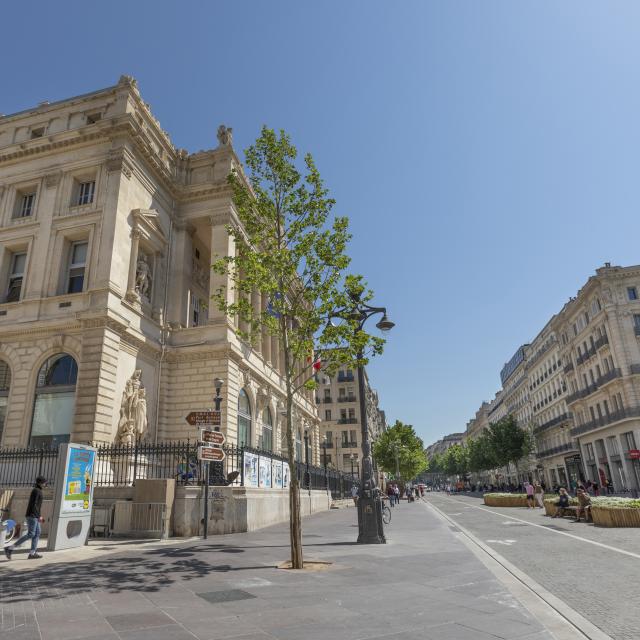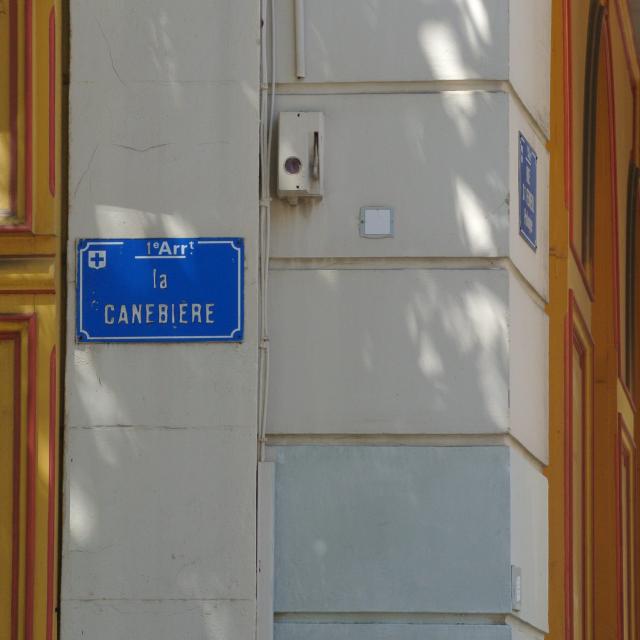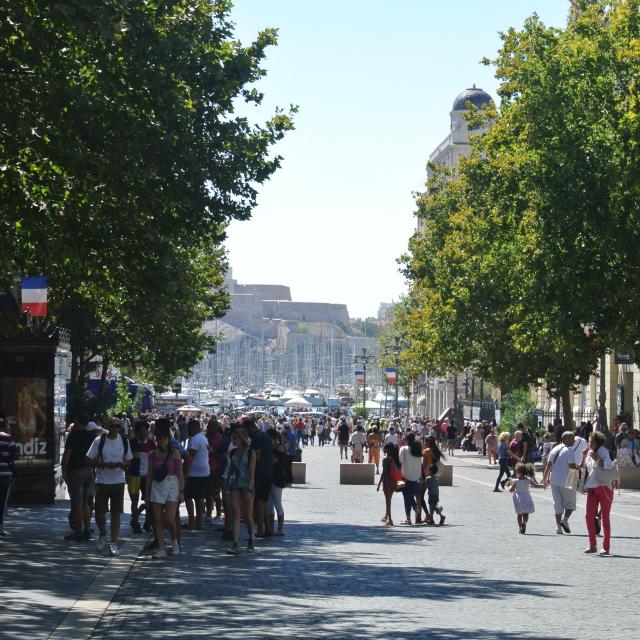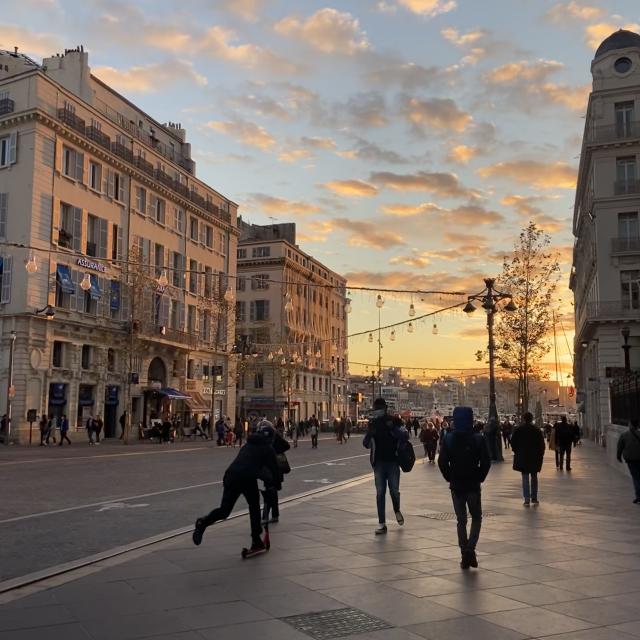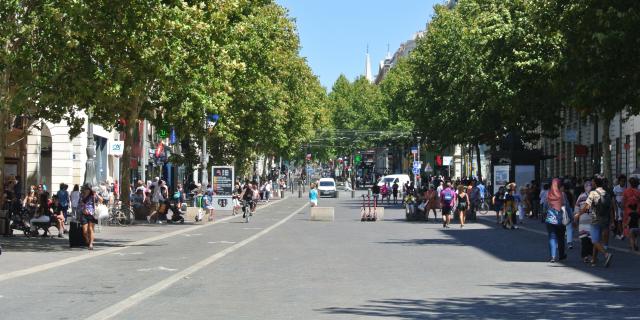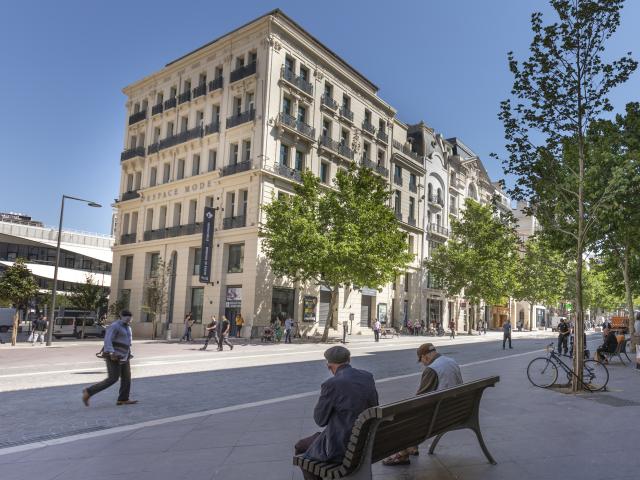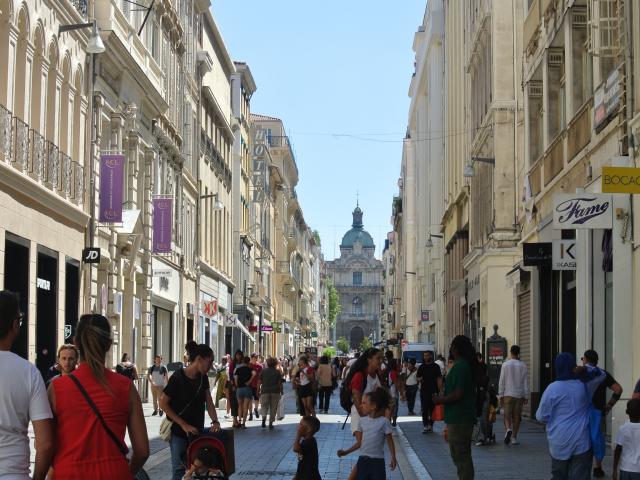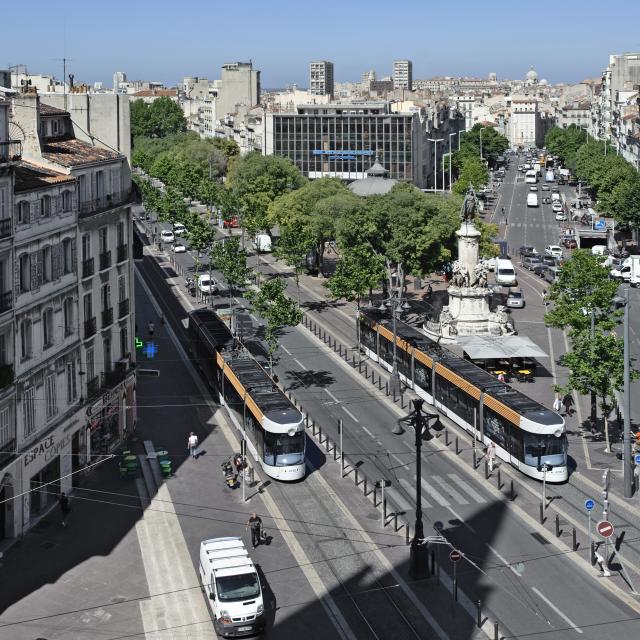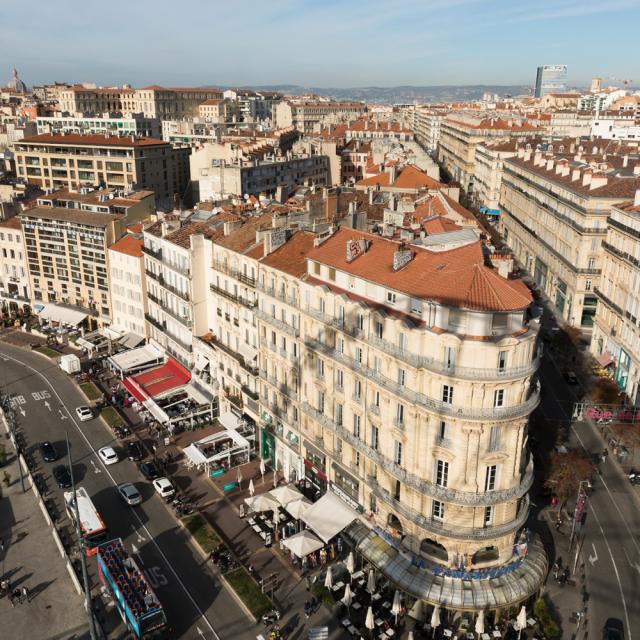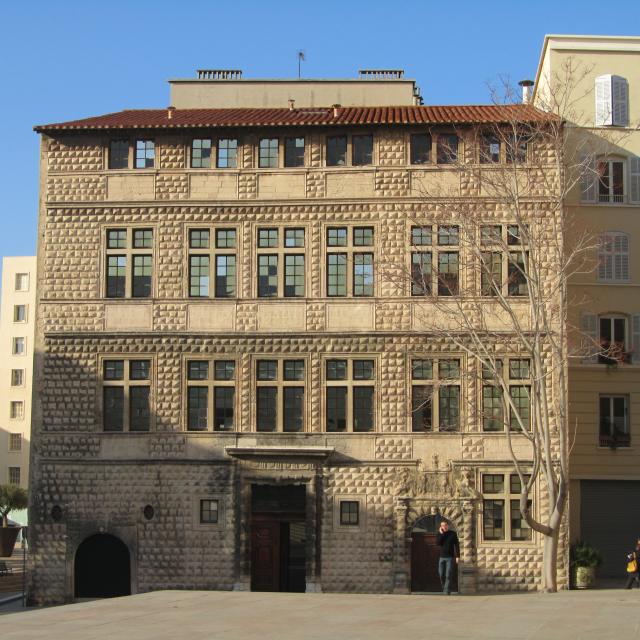A short history of La Canebière
The Canebière is a kilometre-longshopping avenue in the centre of Marseille that stretches from the Eglise des Réformésto the Vieux-Port and, since 1927, has included the Rue Noailles and the Allées de Meilhan. Its name comes from the Provençal word canebiera, which means “chènevière” (hemp field) in French, referring to the economic activity of Marseille. The city was indeed one of the largest hemp trading posts in the world for the manufacture and trade of slings and ropes for sailing ships.
This Marseille arterial road was built in the mid-17th century when the city was enlarged under the orders of Louis XIV, King of France. Initially, it was located between the Cours Saint-Louis and the arsenal des Galères and was 250 metres long and 11 metres wide. Its layout continued to evolve over several centuries. Between 1743 and 1751, several buildings were constructed between the rue Saint-Ferréol and the cours Saint-Louis and luxury shops (perfumery, bookshop, confectionery, etc.) were set up there. In 1785, following the abandonment of the Galleys’ arsenal, the Canebière was extended to the Vieux Port.
The current appearance of the street – from the Quai des Belges to the church of Saint-Vincent de Paul – dates back essentially to the 19th century, during the Second Empire. But it was not until 1928 that the Canebière was officially extended from the Vieux-Port to the Eglise des Réformés. Today, the three distinct sections can be seen, marked by the succession of styles and the different wishes of the town planners.
